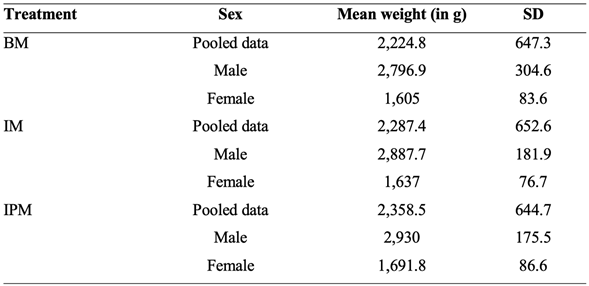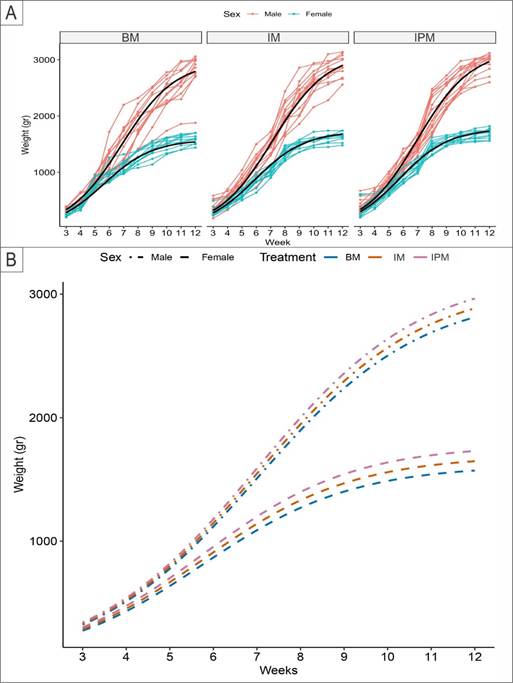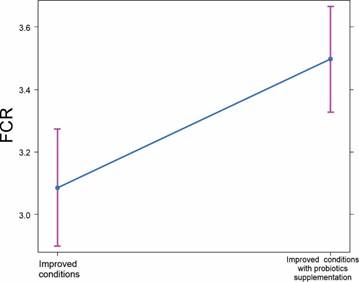Introduction
The Muscovy duck (Cairina moschata) was one of the few animals domesticated in South America by the indigenous populations in the pre-Hispanic period due to its value for food supply and trade (Stahl, 2008; 2005). This duck was later introduced to Asia, Africa, and Europe, where it has been extensively exploited due to its large size and meat quality (Saez et al., 2009; Aronal et al., 2012; Zeng et al., 2015). This duck has been particularly exploited in Asia, which produces 82% of the duck meat worldwide and almost 10% of its poultry farming corresponds to duck farming (Pingel, 2011). The Muscovy duck is popular and of economic value in this region for its size and taste (Zeng et al., 2015). In France, the Muscovy duck and its crossbreeds are highly exploited for the foie grass industry (Baeza et al., 2002). In Africa and Latin America this duck is less used due to cultural differences and lack of improved farming conditions. In these regions, the production is performed mostly under backyards conditions, being important for the economic sustainability of families, food security, and product diversification of rural communities (Ramos, 2009; Shamma et al., 2011; Yakubu, 2013).
Although the use of this anatid is widespread globally, differences in management conditions have led to important variations in growth performance and productivity (Arias-Sosa and Rojas, 2021). In developed countries, management and genetic improvement programs have notoriously improved the final weight of males (4.8 to 5.1 kg; Kleczek et al., 2006; Shamma et al., 2011). Furthermore, the use of force-feeding programs in industrial productions can achieve an even larger size of 6.5 kg (Larzul et al., 2006; Shamma et al., 2011). On the other hand, backyard farming in developing countries leads to limited growth of Muscovy ducks with males weighing just 2 to 2.8 kg (Ortiz et al., 1997; Etuk et al., 2006; Omojola, 2007; Ramos, 2009; Yakubu, 2011).
On the other side, probiotics have gained attention for their role as health and growth stimulants. The increasing concern on the use of prophylactic antibiotics due to their role in microbial resistance problems has also attributed rise in popularity to probiotics (Kabir, 2009). Some studies have reported that lactic acid bacteria naturally present in the gut microflora of Muscovy ducks have a potential role as probiotics based on their adhesion capacity and inhibition of pathogenic bacteria (Xie et al., 2015; Kamollerd et al., 2016). Likewise, Saccharomyces cerevisiae M41 isolated from the duck’s digestive tract has high cellulolytic activity with a potential role in the improvement of food digestibility (Anggraeni et al., 2018). In vivo studies using experimental probiotic strains also report benefits in Muscovy ducks by improving weight gain, protein absorption, immune function, and duodenal structure (Sheng-Qiu et al., 2013; Kamollerd et al., 2016). Likewise, the use of probiotics seems to reduce infections by like Escherichia coli, Salmonella spp., and Enterococcus spp. while promoting the growth of beneficial Lactobacillus spp in the large intestines (Hristev et al., 2004; Nickolova and Penkov, 2005; Sheng-Qiu et al., 2013).
The objective of the present study was to evaluate the effect of improved management conditions and the use of commercial probiotics in the growth performance of Muscovy ducks to determine whether this strategy could enhance productivity of Muscovy ducks in developing countries like Colombia.
Materials and Methods
Ethical considerations
The study complied with all the relevant national regulations and institutional policies for the care and use of animals. The study was approved by the ethics committee of Universidad Pedagógica y Tecnológica de Colombia (UPTC; Act N° 003, February 16, 2018).
Location and animals
The study was conducted on a semi-intensive system farm (150 ducks) located in the municipality of Arcabuco, Boyacá Province, Colombia. The breeding stock ducks corresponded to non-selected individuals obtained from small farms that commercialize this species in the country. We did not use improved lines because they are not commonly used in the country since duck farming is prevalent under backyard conditions (Ortiz et al., 1997).
We tracked weight gain and feed consumption from hatching until 12 weeks of age of 76 ducks during seven months. These variables were measured until 12 weeks as previous studies indicate this time as the optimal age for slaughter of Muscovy ducks (Kleczek et al., 2006; Larzul et al., 2006; Shamma et al., 2011). The ducklings were kept with the mother and fed mashed commercial diets (El Galpón, Bogotá, Cundinamarca, Colombia) containing 18% protein, 2.5% fat, 6% fiber, and 8% ashes until three weeks of age. Then, they were randomly assigned to one of the following treatments: 1. Backyard management (BM). This treatment simulated the normal conditions of traditional low-technology farms raising Muscovy ducks (Avilez et al., 2007; Salgado-Ubeda and López-Mendonza, 2012). The ducks were free, had access to natural small lakes to swim in, were fed corn, and free to search for plant material and insects. Corn was fed at ad libitum. The feed served and left by the ducks was daily weighted to evaluate feed consumption. We assigned 25 individuals (312.96 g ± 59.60) to this group, including 13 males and 12 females; 2. Improved management (IM). In this treatment, ducks had limited movement, more access to feed, and controlled sanitary conditions of pens. The ducks were maintained in an enclosed barn with separated pens and concrete flooring covered with rice husk. They had access to clean recipients for feed and water and a small pond that was frequently cleaned were ducks were allowed to swim. Feeding was provided ad libitum and feed served and left by the ducks was daily weighted. We assigned 25 (331.28g ± 103.99) individuals to this group, including 13 males and 12 females; and 3. Improved conditions with probiotics supplementation (IPM). Management of these individuals was the same as in treatment two. However, these animals were supplemented with a commercial probiotic mixture (Floralac, Novalfarm Ltda, Bogota, Cundinamarca, Colombia) composed of Streptococcus faecium, Bifidobacterium bifidum, Lactobacillus casei, Lactobacillus acidophillus, sodium, potassium, citric acid, and ascorbic acid. Following manufacturer's instructions, 1g of probiotics per kg of live weight of birds were fed during five days. A total of 26 animals (362.19 g ± 132.27) were assigned to this group, consisting of 14 males and 12 females.
There were not significant differences (evaluated by the Kruskal Wallis test) between treatments in initial weigh (at week 3) for males (p=0.778), females (p=0.89), or pooled data (males and females; p=0.69). Weight gain of each duck was measured weekly in all three treatments. Feed consumption was recorded to calculate feed conversion ratio (FCR=g of weight/g of feed consumed) of each pen for IM and IPM groups. For the BM treatment, we also measured feed consumption and calculated general FCR, but it was not included on the statistical analysis as we had no pen-groups to make statistical comparation. No symptoms of infectious diseases were detected, but three individuals were affected by ascites. Thus, data of sick individuals were excluded as this syndrome affects weight gain. A total of 15 individuals were slaughtered (five per treatment) by cervical dislocation. Slaughtered animals were manually de-feathered, eviscerated and heads and feet were cut off. Then, the carcasses were weighted. Weight gain replicates corresponded to 76 ducks (BM=25, IM=25, IPM=26); FCR replicates corresponded to 11 pens (IM=5; IPM=6); and carcass evaluation was conducted with five randomly selected ducks from each treatment (Baeza et al., 1997).
All the data were collected on MS Excel and evaluated using R statistical software (version 3.6; R Core Team, 2020). Growth curves were estimated by sex and treatment using two of the most common nonlinear mixed-effects models: Gompertz and logistic. Of these, a three-parameter logistic model was found to maximize Akaike’s information criterion with the observed data. Therefore, the parameters used for modeling growth curves were asymptotic weight (maximum weight reached by ducks), time until half of the asymptotic weight is reached, and slope at the inflection point (which represents velocity of weight gain). Generalized linear models (GLMs) with Gaussian distribution and identity link were used to assess probiotics effect on FCR, including sex ratio and number of ducks as covariables. A GLM model with Fisher’s post-hoc test was also used to evaluate the effect of treatment and sex on carcass yield (response variable).
Logistic model: y(x)=
Gompertz model: y(x)= Φ1 exp (-Φ2+ Φ3 3 x )
Where Φ1corresponds to the maximum expected weight, Φ2 represents the expected time required to reach half the maximum weight and it is the inflection point. Finally, Φ3 is the slope at the inflection point (Pinheiro and Bates, 2000).
Results
Notorious dimorphism in the size of male and female ducks was observed, being the males heavier (2,873 ± 228.4 g) than females (1,644.6 ± 87.9 g) at week 12 (Table 1). The three parameters of the logistic model were significantly different for males and females. Males had an asymptotic weight of 1,395.8 g (p<0.001) higher than females. Similarly, the slope on the inflection point was higher for males. Whereas females were expected to reach half their asymptotic weight 1.25 weeks (p<0.0001) before males (Table 2).
Table 1 Final weight of Muscovy ducks by treatment and sex.

BM: backyard management; IM: improved management; IPM: improved conditions with probiotics supplementation. SD: standard deviation.
The growth curves of improved and probiotic treatments showed a slight increase in live weight (Figure 1). In the fitted model, only asymptotic weight was significantly different. The fitted model predicted a significant increase of asymptotic weight (final weight) of 151.3 g for IM vs BM (p=0.02) and a significant increase of 193.8 g for IPM vs BM (p<0.01). The size difference between males and females started to increase from week seven when males started to have higher weight gain. After week seven, greater weight in the improved conditions compared to the backyard treatment were observed (Figure 1).
The FCR analysis was affected by treatment and sex ratio in the pens (GML; p<0.01), while the number of ducks did not have a significant effect (p=0.14). The FCR was higher in the probiotic group (IM=3.1 ± 0.2 vs IPM=3.5 ± 0.5; p<0.01). Thus, although the probiotics seem to increase weight gain, they lead to less efficient feed conversion (higher FCR; Figure 2). We could not include BM data in the GML analysis, but its general FCR was higher (4.06) than in the improved groups indicating a poorer feed conversion efficiency. Carcass yield was 74.5% ± 2.8 and neither sex nor treatment had significant influence (GLM; p=0.17 and p=0.9).

Figure 1 A) Growth data of Muscovy ducks in each treatment, discriminated by sex. B) Fitted growth curves of Muscovy duck by sex and treatment.
Table 2 Sex and treatment effect on weight gain evaluated by nonlinear mixed-effects models.
| Comparison | Asymptotic weight | Slope at the inflection point | Time until half of the asymptotic weight |
|---|---|---|---|
| Male vs female | 1,395.8 (54.4) g; t=25.6, p<0.001* | 0.16 (0.07); t=2.1, p=0.03* | 1.25 (0.13) weeks; t=9.9, p<0.001* |
| BM vs IM | 151.3 (67.1) g; t=2.2, p=0.02* | 0.03 (0.09); t=0.4, p=0.7 | 0.27 (0.15) weeks; t=1.8, p=0.07 |
| BM vs IPM | 193.8 (50.7) g; t=3.2, p=0.001* | 0.006 (0.09); t=0.07, p=0.94 | 0.12 (0.15) weeks; t=0.79, p=0.42 |
*Significant difference (p<0.05). Values are presented as mean (standard error). t: t-value. p: p-value.
Discussion
A notable difference in weight between males and females was observed, which indicates better productivity in male ducks as they reach a larger size faster. This difference was also reported in previous studies in Muscovy ducks and is considered as one of the disadvantages of this duck breed (Wawro et al., 2004; Kleczek et al., 2006; Larzul et al., 2006; Shamma et al., 2011). Average weight gain was like results of a previous study in Colombia that reported a final weight of 2.9 kg for males and 1.6 kg for females (Ortiz et al. 1997). Likewise, it is like other studies in non-improved lines of Muscovy ducks that reported 2.0-2.8 kg in males and 1.5-1.7 kg in females (Etuk et al., 2006; Banga-Mboko et al., 2007; Omojola, 2007; Ramos, 2009; Yakubu, 2011).
Final weight in the present study was notoriously lower than that reported for improved lines, which reached between 4.5-5.1 kg in males and 2.4-3.1 in females (Wawro et al., 2004; Kleczek et al., 2006; Larzul et al., 2006; Shamma et al., 2011). Thus, our final weight values were in the expected range for unselected lines, but inferior to the potential growth performance of Muscovy ducks after genetic selection. As a result, the use of improved lines in Colombia and other low productivity regions is a priority as improvement of management conditions does not seem to be enough to achieve competitive weight outcomes.
The FCR of BM was higher, showing that backyard management leads to poorer feed conversion efficiency. This is similar to studies that indicate better FCR in farms with improved management conditions compared to uncontrolled or backyard conditions (Baeza et al., 2002; Etuk et al., 2006; Shamma et al., 2015; 2011). This poorer feed conversion and lower weight gain of BM explains why the duck farming industry in developing countries is underdeveloped, as duck management in these regions corresponds largely to artisanal production or family systems.
The FCR of 4.1 in BM is similar to 4.2-5.1 found in a study in Venezuela using unselected lines of Muscovy ducks, but under improved conditions (Ramos, 2009). Likewise, we obtained better results compared to a study in Nigeria (FCR=11.4-12.2) with non-selected lines under semi-intensive and intensive management (Etuk et al., 2006). On the other hand, our 3.1 FCR under improved conditions was similar to other report in Muscovy ducks (2.6-3.6) under improved conditions using selected lines (Baeza et al., 2002; Shamma et al., 2011). Thus, although final weight in our study was lower than reports in systems using improved lines, we obtained comparable FCR values with improved management conditions.
The use of commercial probiotics showed significant improvement in weight gain. However, it led to higher (less efficient) FCR. Previous research indicated that supplementation with Bacillus subtilis natto probiotic improves growth performance of Muscovy ducks. It showed improvement in both weight gain (32.4 gr/d in the control group vs 34.5 g/d in the probiotics) and FCR (2.72 in the control group vs 2.58 in the probiotics treatment; Sheng-Qiu et al., 2013). However, other studies using Lactobacillus reutter probiotics did not find difference in weight of treated Muscovy ducks (Kamollerd et al., 2016). Thus, further studies are required to assess the effect of probiotics on growth performance of Muscovy ducks, particularly FCR.
We obtained 74.5% carcass yield (73.5 in males and 75.5 in females) and it was not significantly different between sexes or treatments. These values were higher compared to a previous report in Colombia that found 68.54 and 66.4% carcass yield of Muscovy ducks (Ortiz et al., 1997). Likewise, our results are similar to a study in Poland using a selected line of Muscovy ducks with 71% average carcass yield (Wawro et al., 2004). On the other hand, our yields were higher than a study with selected lines and force-feed program that obtained 59.5% carcass yield (Shamma et al., 2015). Thus, carcass yield in the present study was higher, compared to selected and unselected lines of Muscovy ducks.
The results of the present study indicate that improvement of management conditions allows for a greater weight gain and better feed conversion in Muscovy ducks. Furthermore, the FCR values obtained were comparable to those reported in developed duck farming industries. However, even with improved management conditions, final weight of the animals is notably lower than those obtained with selected lines. Thus, there is a need to include improved lines or genetic selection to promote duck farming as a more profitable industry in developing countries.
Our results indicate that the use of commercial probiotics under improved management increase weight gain of Muscovy ducks; however, probiotics also increased FCR, leading to potentially higher production costs. Thus, further studies using other probiotic formulas should be conducted to establish if this type of supplementation can improve productivity of Muscovy duck farming.















